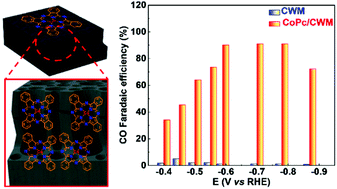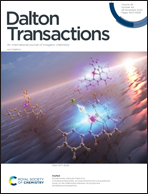Immobilizing cobalt phthalocyanine into a porous carbonized wood membrane as a self-supported heterogenous electrode for selective and stable CO2 electroreduction in water†
Abstract
Immobilizing a cobalt phthalocyanine (CoPc) molecular electrocatalyst into a porous carbonized wood membrane (CoPc/CWM) results in a self-supported heterogenous electrode. The CoPc/CWM electrode with an ultralow CoPc loading of 8.2 × 10−6 mol cm−2 exhibits a faradaic efficiency (FE) over 90% for CO production at a wide potential range from −0.59 to −0.78 V versus reversible hydrogen electrode (RHE) and excellent long-term durability during a 12 h electrolysis reaction.



 Please wait while we load your content...
Please wait while we load your content...